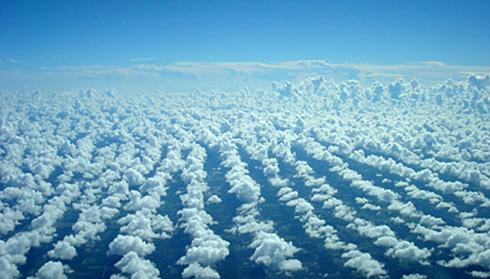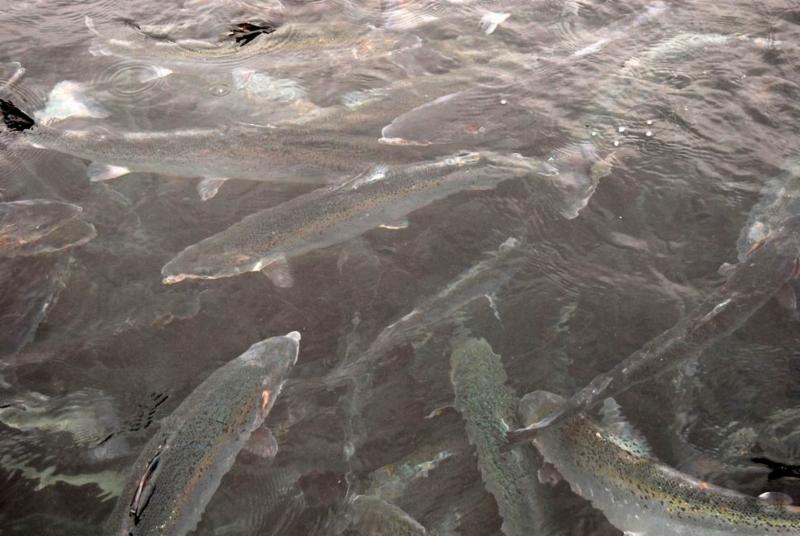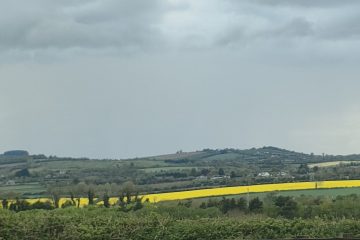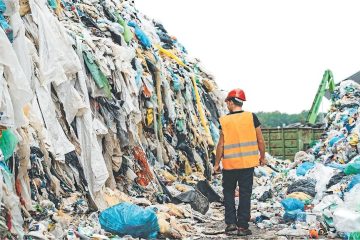Carbon footprint of Trump’s US-Mexico wall is close to Ireland’s annual CO2 emissions

November 11, 2016
The border wall proposed by President-elect Donald Trump to span US-Mexico border from the Pacific to the Gulf of Mexico is one of the few policy proposals that Donald Trump has spoken about in detail. However, is the project feasible? Environmental Treaties and legislation as well as wildly unrealistic budget proposals may play a role in sinking one of the major proposals of Trump’s campaign.
The carbon footprint of the project if it comes to fruition will be equivalent to the annual output of smaller European countries. Specifically, the enormous quantity of concrete which would be required is worrying. A major component of concrete is cement, which has its own environmental and social impacts and contributes largely to those of concrete. The cement industry is one of the primary producers of carbon dioxide, a major greenhouse gas.
To begin with, the President-elect has consistently focused on the financial costing of the project throughout his campaign. His discussions of cost varied from an initial figure of 4 billion dollars to 15 billion. However, much more worrying from the environmental perspective is the carbon dioxide emissions. The dimensions of the proposed wall have also varied greatly, criticism of the proposal has largely focused on the xenophobic overtones of the project as well as its fitness for purpose and budget. To date the ecological footprint of the wall, has failed to make the headlines.
Calculating raw materials for the wall
The land border between the United States and Mexico spans 3,201km.
Working through the calculation based on estimations of an American civil engineer we get the following:
167,272,000 cubic yards of concrete would be needed (1 cubic yard = 0.764555 cubic meters)
approximately 128 million meters cubed of concrete wall
Typical values for reinforced structural concrete are 0.372 tonnes CO2 equivalent for each cubic metre cast, which allows for 0.1 tonnes of steel reinforcing. (Source “Embodied Carbon Dioxide (ECO2) and Construction Materials” Version 1.1 dated 03/03/08.)
Total Carbon Dioxide Emissions for Trump’s Wall : 48,000,000 tonnes !
Putting this figure in perspective 48,000 kilotonnes is more than half the annual carbon emissions of countries like Chile, Romania, Nigeria and the Philippines which all hover around the 90,000 kt annual emissions mark. Ireland’s annual CO2 emissions are 57,722 kt in 2014 and 59,845 kt in 2015. This means that Trump’s wall has a carbon footprint of 80% of Ireland’s annual CO2 emissions.
This carbon footprint does not include the transportation and energy usage involved in the construction. The total carbon footprint of Trump’s proposed wall is likely to exceed Ireland’s annual carbon emissions!
Based on current day pricing the same civil engineer estimated the raw materials alone would cost in in excess of 17 billion US dollars. This estimate does not include the design, labour or maintenance required to bring the project to completion. To put his figure in perspective, the proposal for the wall would exceed the annual operation budget of NASA (approximately 19 billion US dollars).
Will the combination of a gigantic financial budget and a gigantic carbon footprint be enough to sink the project?
The Mexican President Enrique Peña took to Twitter after a press conference held with Trump in August to confirm that Mexico would not be contributing to the cost of the planned wall.
In addition to the budgetary issues which may prevent the project from coming to fruition, there are numerous environmental issues which have garnered less attention in the media. Nonetheless, there are international treaties between the United States and Mexico which prohibit structures that obstruct water flow from being built along the Rio-Grande and Colorado river basins.
Ecological Impact
The International Boundary and Water Commission is a binational commission, established to apply boundary and water treaties and agreements between the United States and Mexico. Pursuant to the 1944 Treaty, decisions of the IBWC are recorded in the form of Minutes that, following approval by the U.S. and Mexican governments, enter into force as binding international agreements of the U.S and Mexico.
The planning of the wall would likely run into serious difficulties based on ratified treaties already in force.
Some of the environmental and planning issues that Trump’s wall would likely face have already cropped up during the more modest policy of former president G.W. Bush after he signed the Secure Fence Act of 2006. This project involved laying 700 miles of fencing along the border. In the state of Texas large chunks of the border area contain the basin of the Rio Grande and thus is protected by law. Undoing this, if it is even possible would involve undoing more than a century of ecological collaboration between Mexico and the United States and possibly create a major flooding hazard.
Again, if we look at the much more tapered down fencing introduced to protect the international border, the former Secretary of Homeland Security, Michael Cherloff signed a document giving his department the authority to violate more than 30 laws including numerous environmental laws such as the Endangered Species Act, the Safe Drinking Water Act and even the Native American Graves Protection and Repatriation Act.
Undoubtedly, the scale of the wall involve a much more serious ecological impact. Agustín I Ávalos from architectural firm in Guadalajara produced a series of tongue-in-cheek renderings of the proposed border wall. According to Estudio 3.14 the wall should be pink and modeled on the colourful stucco walls of Mexican Architect Luis Barragán so as to satisfy Trumps need for aesthetics. The project is described as a “megalomaniac architectural proposal” containing both prisons and shopping malls!
Let’s hope for the sake of the environment as well as international relations that Trump does not proceed with anything resembling this megalomaniac and environmentally destructive wall.
In the meantime behold Trump’s “Gorgeous Perversity” as envisioned by Agustín I Ávalos as both a prison and a wall.
[x_image type=”rounded” float=”none” src=”https://greennews.ie/wp-content/uploads/2016/11/trump-wall2.jpg” info=”none” info_place=”top” info_trigger=”hover”]
[x_author title=”About the Author”]







